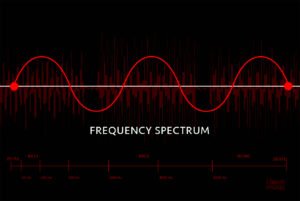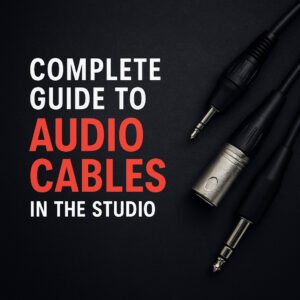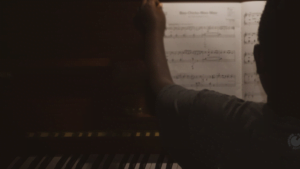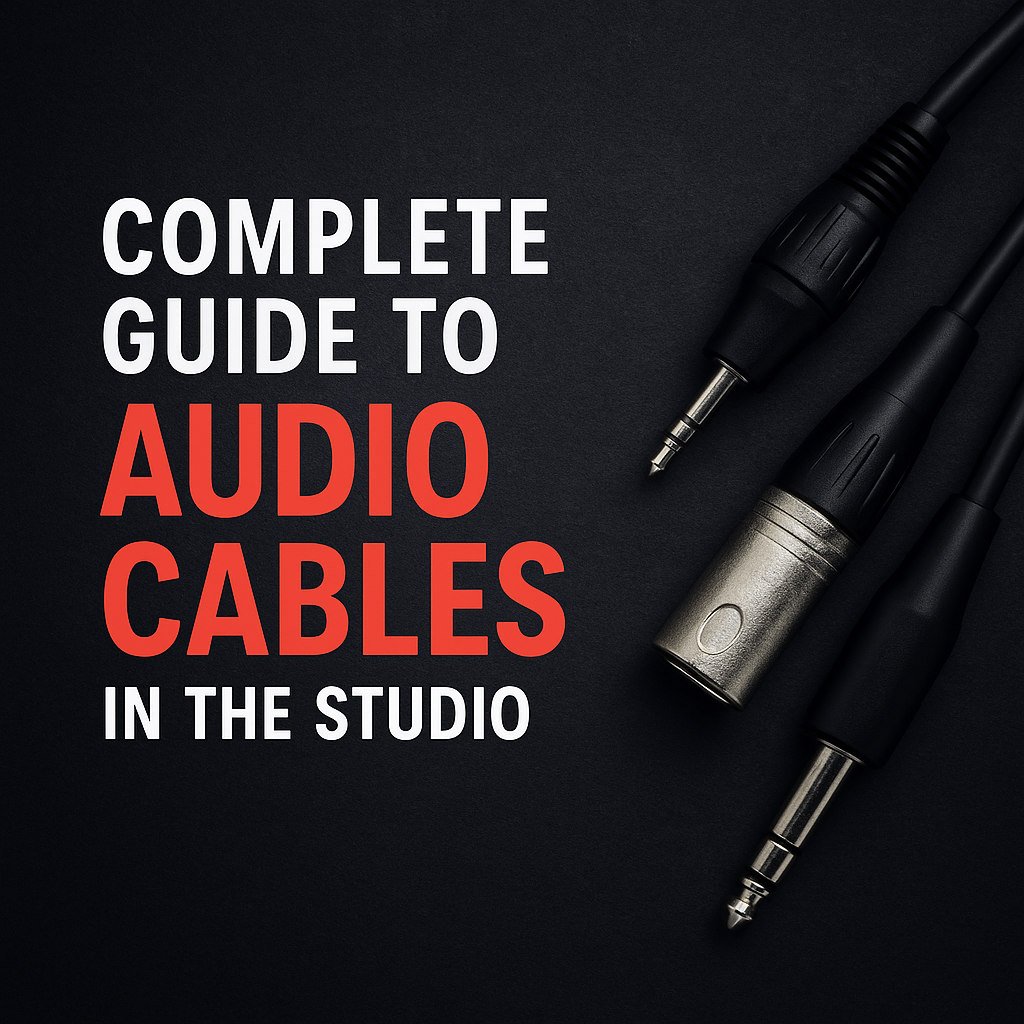If you are entering the field of audio, then this article is of super importance to you. The study and understanding of Frequency are vital to Audio Engineering and Music Production in all its aspects, especially in the Mixing process.
Sound and the Frequency
Every sound we hear has a distinct frequency and we choose sounds based on relative frequencies. So that song you just produced, you made it by combining multiple sounds in a sequence and you did so because of the distinct frequencies of each sound. For example, a drum kit has lower frequencies compared to a guitar that has mid-range frequencies. In a drum kit – the bass drum has a bass frequency or low pitch, compared to the symbols and high-hats that have a higher pitch and vibrate on a higher frequency. The instruments that blend well and resonate together, sound better and the ones that clash, sound off.
Frequency
The frequency refers to the number of times per second that a sound wave’s cycle repeats.
In music, the terms frequency, pitch, and tone are all related.
The Musical term for frequency is PITCH represented by a Letter from A up to G while frequency (Measured in (Hz) or Hertz ) is represented in Numbers. The higher the frequency, the higher the pitch. A tone is a sound with one or more identifiable frequencies.
“Music is far more complex than these basic tones. It contains thousands of frequencies mixed together.”
The frequency that establishes a sound’s pitch is its fundamental frequency. Also just referred to as “Fundamental”, it is the lowest frequency and is also perceived as the loudest, the ear identifies it as the specific pitch of the musical tone.
Frequency Spectrum
Anything less than 20Hz is referred to as Infrasonic and anything over 20kHz is Ultrasonic. Sound in the upper spectrum and over as well as lower spectrum and below can be felt more than heard, but of course, may be heard by other living creatures. Frequencies too high or too low can also damage our ear drums.
The Frequency Spectrum is the audible range, perceivable by the human ear between 20Hz to 20,000 Hz (20 kHz). However, the average human can hear less than this 20 Hz to 20 kHz range and, as individuals age, this detectable range only continues to diminish.
The Audio Spectrum is divided into 7 Frequency Bands as below:
1. Sub-Bass (20Hz – 60Hz)
Considered as the deepest sound that human ears can perceive, it provides the first usable frequency range in most recordings. Sub-bass is more felt than heard. Sound is nothing but vibrations and with higher vibrations, the sound is powerful and impactful. It takes a specialised instrument to produce sub-bass, such as bass guitar, bass trombone, harps and the like. However, exposure to continuous sub-bass is unpleasant to listen to.
2. Bass (60Hz – 250Hz)
Wider than sub-bass, Bass is easier to produce and there are several popular instruments such as trumpet, saxophone, guitars, violin, and cymbals that produce bass audio. Even male and female voices can produce bass, as it is the normal speaking vocal range. Modern music tracks focus on bass sounds between 90 Hz to 200Hz area. Bass is vital and popular in modern music, its significance is seen in Dance music making tracks full and rich to the human ears. The frequencies around 250 Hz can add a feeling of warmth to the bass without loss of definition. However, music with a bass boost can produce a boomy sound that could be unpleasant as well over long durations.
3. Low Midrange (250Hz – 500Hz)
Human male and female voices can easily produce low midrange sound, and so can most musical instruments. You can hear these low tones clearly and some bass is present in the low midrange. If you boost low midrange reasonably, the sound will be clearer. But if you boost it extremely, the sound can get muffled. This is also where the muddiness of sound is at. In the lower mid-range are brass instruments and made woodwinds like alto saxophone and the middle range of a clarinet.
Instruments and voices sound weird when this range is not heard clearly, since the body and character of the voice reside in this range, singing makes it especially obvious.
The voice is one of the sounds we are most accustomed to hearing, Engineers frequently utilise their own voice while speaking into a microphone to calibrate a sound system, any irregularities in the system will be obvious in the way it is repeated right away.
4. Midrange (500 Hz – 2000 Hz)
The Human ear is particularly sensitive to how the human voice sounds in this frequency coverage and therefore forms one of the crucial and critical parts of modern music. Musical instruments are tweaked to make the midrange sound more prominent and stand out around the other tones of all the instruments in the song. This range can cause ear fatigue and can give instruments a horn-like sound at the 1000Hz range, so avoid over-tweaking. One can find the highs of instruments like the violin and piccolo in this range.
5. Upper Midrange (2000Hz – 4000Hz)
The Upper midrange is responsible for the attack on percussive and rhythm instruments and vocals can be most prominent at this range. It brings in the rhythm to a song thru percussive instruments producing upper-midrange audio. Some musical instruments produce upper midrange frequency with a slight boost. But if the boost is too much, hearing can be fatigued. Upper midrange is mostly suitable for vocals as such vocal sounds are highly noticeable.
6. Presence (4000 Hz – 6000 Hz)
The lower treble is referred to as Presence as it enhances the clarity of sound. But when the presence is boosted, it sounds very harsh and causes irritation. Therefore, it needs to be absolutely perfect without any boost with the right cutting in this range to make the sound more distant and transparent for its distant property. You will find violin and piccolo producing perfect Presence of Lower Treble.
7. Brilliance (6000 Hz – 20000 Hz)
Composed entirely of harmonics, Brilliance is responsible for the sparkle and air of a sound (where sound is become more like winds and whistles). Brilliance is often referred to as Highs. Difficult to produce, with just a few instruments producing this frequency range, Brilliance adds a novelty to any sound. When you boost brilliance, it can cause distortion and a hissing sound. Such a sound can be extremely displeasing. Certain percussion instruments, like cymbals, fall into this category.
You will often find these bands in the specifications of speakers, microphones, amplifiers, instruments, and various such audio gadgets.
Generalisation of Ranges
Additionally, you will often come across more subjective terminology generalising these ranges.
BASS: comprising of Sub-Bass & Bass
MIDS: include Low Midrange, Midrange & Upper Midrange
HIGHS: consist of Presence & Brilliance
The Bass ranges are often referred to as the “lows” or the “low-end”. All the midrange content can get referred to as the “mids”, and everything above that as the “highs”. These subjective terms are correct and do describe the range in the spectrum based on how they are used. Often these terms are used to describe Sound Equipment capabilities and capacities. Eg. Speakers may be described as Lows, Bass Bins or Sub Woofers; Mids or Midrange speakers and Tweeters or Highs respective to the spectrum they reproduce.
















